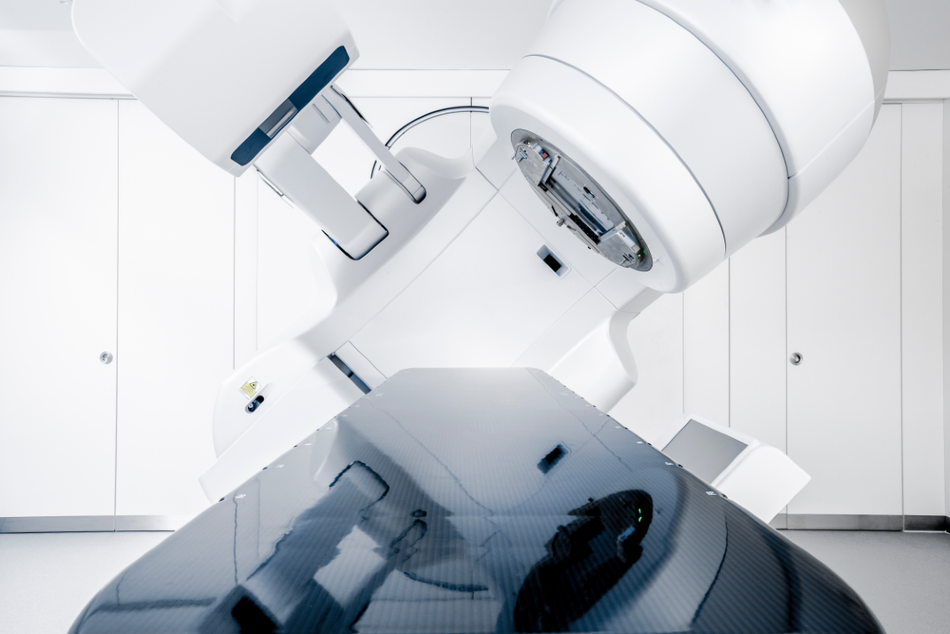
Image Credit: Thomas Hecker / Shutterstock.com
For many years, glass-ceramics have been explored for their use in bone regeneration. Now, scientists are researching their potential in cancer treatment.
Recent research has highlighted their potential future use in several emerging applications within oncology. However, there is still work to be done before their full capabilities in this medical area are realized.
The Current View of Cancer Treatment
The latest figures estimate that as many as one in two people will get cancer in their lifetime (according to UK statistics, and US statistics that pertain to women specifically). While the prognosis varies depending on the type of cancer and the individual, and many strides forward have been taken to prevent, diagnose early, and treat cancer effectively, more work is required to improve prognosis.
With thousands of people newly diagnosed each day, more effective treatments are constantly needed to improve quality of life and prevent unnecessary death.
At present, a number of different approaches are taken to treating cancer, including surgery, radiotherapy, chemotherapy, immunotherapy, targeted therapy, hormone therapy, and the emerging area of precision medicine.
Overall, the main types of treatment face a major drawback in that they are not selective enough, meaning that they end up destroying healthy cells as well as cancer cells. While the newer approaches are attempting to address this, there is still a need for more selective therapy options that will work for individuals with all kinds of cancer.
An Alternative Therapeutic Approach
Recently, scientists have begun developing an alternative therapeutic approach based on treating cancer via hyperthermia. The tactics employed by this approach involve raising the temperature of the tumor to induce cell death locally, killing the cells when they reach temperatures they cannot withstand (around 43 degrees Celsius).
To do this, scientists induce a magnetic field aimed at the tumor that gradually increases the temperature. This allows for the cancerous cells to be destroyed in situ, without the danger of causing damage to the surrounding healthy tissue. One hallmark of cancerous tumors is that they lack sufficient blood vessels, leaving them vulnerable to higher temperatures that do not harm normal, healthy tissue.
Learn more about using bioceramics in hyperthermia treatment
The hyperthermia technique is currently employed via several different methods, via local hyperthermia to deliver energy to heat a specific tumor. It is often used in conjunction with radiotherapy, via regional hyperthermia, where heat is applied to larger areas such as an organ or limb, or via whole-body hyperthermia which is used to treat metastatic cancer.However, a major barrier that scientists developing this technique have faced is sourcing a material that has magnetic properties that allow safe use. While a range of biomaterials has been developed for use in local hyperthermia techniques, glass-ceramics are the materials that have emerged as the most promising.
Using Glass-Ceramics in Hyperthermia Techniques
In hyperthermia cancer treatment, only ferromagnetic and ferrimagnetic materials are used. When they are exposed to a higher-frequency, altering magnetic field, the materials produce heat due to the hysteresis effect.
The past few decades have seen the development of a number of glass-ceramics in various clinical applications due to their unique properties, such as their bioactivity, biocompatibility, osteoconductivity, and osteoproductivity.
When implanted within living tissue, glass-ceramics generate chemical bonds with the living tissue, making them useful in the application of hyperthermia. For this reason, this class of materials has become of key interest in the development of thermo-seed materials used in cancer therapeutics.
Studies have shown that glass-ceramics implanted around cancerous bone tissues can produce enough heat to raise the temperature of the cancerous tissue high enough to destroy it, while leaving the surrounding healthy tissue unharmed. Scientists are able to control the heat that is generated by the implanted glass ceramics via their production.
The properties of the glass-ceramics, such as the number of crystalline phases and the glass microstructure, influence how the material generates heat in response to the magnetic field. Scientists can further control the level of heat generated via controlling the properties of the magnetic field that is exposed to the tissue and implant, such as its strength and frequency.
Find out more about thermal conductivity systems
A growing body of evidence has proven the efficacy of glass-ceramics as suitable magnetic and bioactive materials for use in hyperthermic approaches to cancer treatment. Further research is currently underway to deepen our understanding of glass-ceramics and how they function in this kind of cancer treatment.
Scientists are exploring how to prevent the emergence of undesired crystalline phases in the material, as well as prevent the magnetite oxidation to hematite, which can happen when undergoing heat treatment.
As research continues, the use of glass-ceramics in cancer treatment is predicted to grow as the biomaterials become more sophisticated and effective.
References and Further Reading
National Cancer Institute (2018) Cancer Statistics. [Online] Available at: https://www.cancer.gov/about-cancer/understanding/statistics (Accessed on 29 May 2020).
Simon, S. (2020) Facts & Figures 2020 Reports Largest One-year Drop in Cancer Mortality. [Online] American Cancer Society. Available at: https://www.cancer.org/latest-news/facts-and-figures-2020.html (Accessed on 29 May 2020).
Hildebrandt, B. (2002) The cellular and molecular basis of hyperthermia. Critical Reviews in Oncology/Hematology, 43(1), pp.33-56. Available at: https://pubmed.ncbi.nlm.nih.gov/12098606/
Miola, M., Pakzad, Y., Banijamali, S., Kargozar, S., Vitale-Brovarone, C., Yazdanpanah, A., Bretcanu, O., Ramedani, A., Vernè, E. and Mozafari, M. (2019) Glass-ceramics for cancer treatment: So close, or yet so far?. Acta Biomaterialia, 83, pp.55-70. Available at: https://pubmed.ncbi.nlm.nih.gov/30415065/
Cancer Research UK. 1 in 2 people in the UK will get cancer. [Online] Available at: https://www.cancerresearchuk.org/about-us/cancer-news/press-release/2015-02-04-1-in-2-people-in-the-uk-will-get-cancer (Accessed on 29 May 2020).
Disclaimer: The views expressed here are those of the author expressed in their private capacity and do not necessarily represent the views of AZoM.com Limited T/A AZoNetwork the owner and operator of this website. This disclaimer forms part of the Terms and conditions of use of this website.